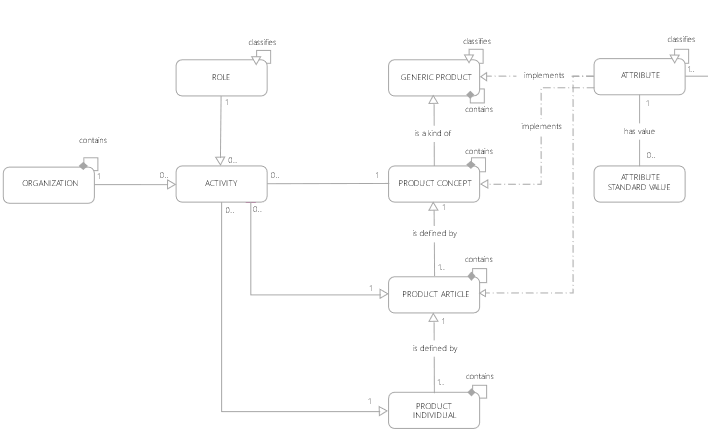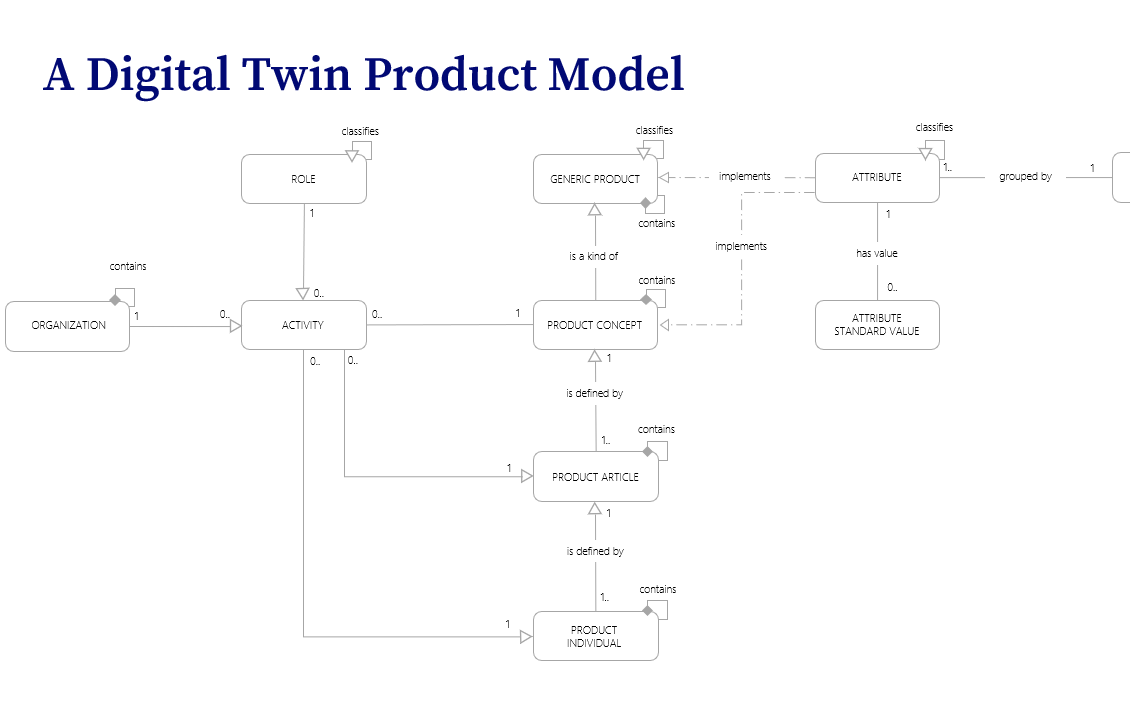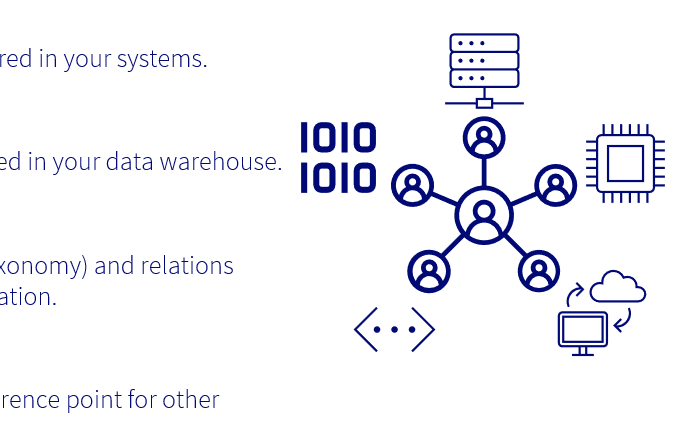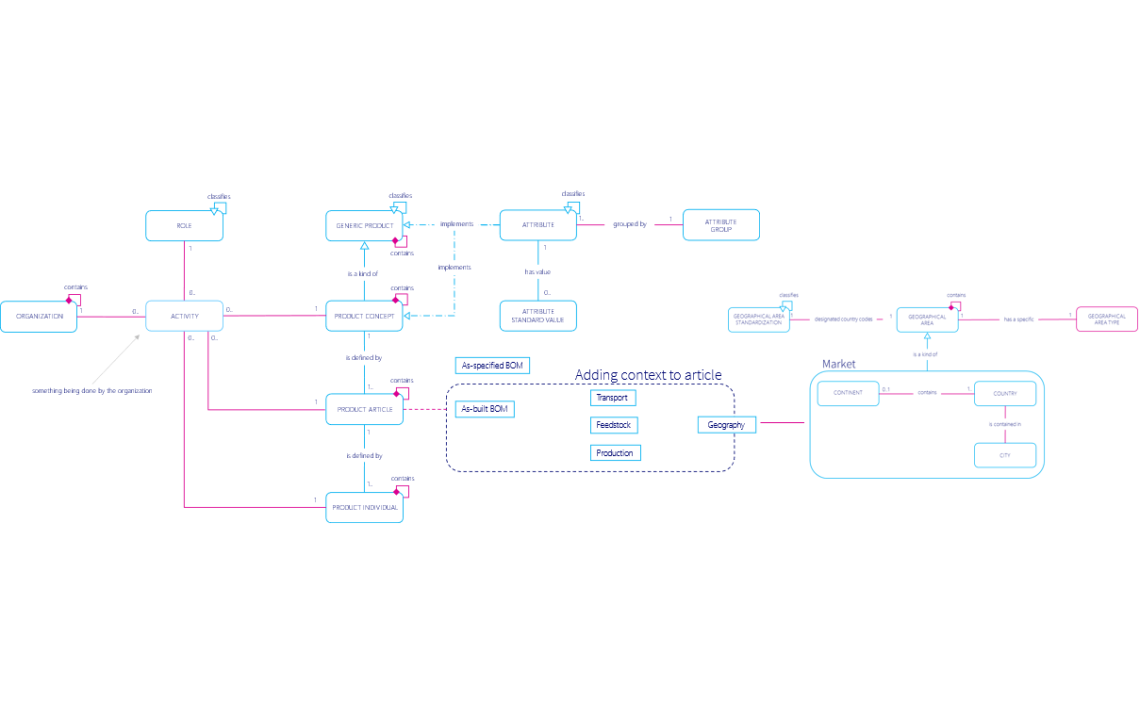4 Apr 2023
A Game Changer for Productivity and Business Intelligence
Discover the value of meta metadata and how it can revolutionize the way your business can analyze and utilize data for both productivity and decision-making.
Understanding Meta Metadata
Meta metadata is essentially data about metadata. It describes the structure and models of metadata, such as classification structures (taxonomies) and its ontologies. By providing a comprehensive view of the underlying structure and relationships between different data elements, meta metadata allows people to better understand the nuances and complexities of their data. Often leading to more accurate insights and enables the organization to make better decisions. Consider the example of a product. A specific product unit with a unique serial number is a Product Individual, while the Product Article refers to the Product as engineering designed (EBOM). The Product Concept is a grouping of several article, for example you have several articles for the same product with different power cables for different geographies. In this context, the Product Article is metadata for the Product Individual, while the Product Concept is its meta-metadata. This multi-layered structure helps capture the intricacies of data relationships, which can significantly improve data management and analysis.
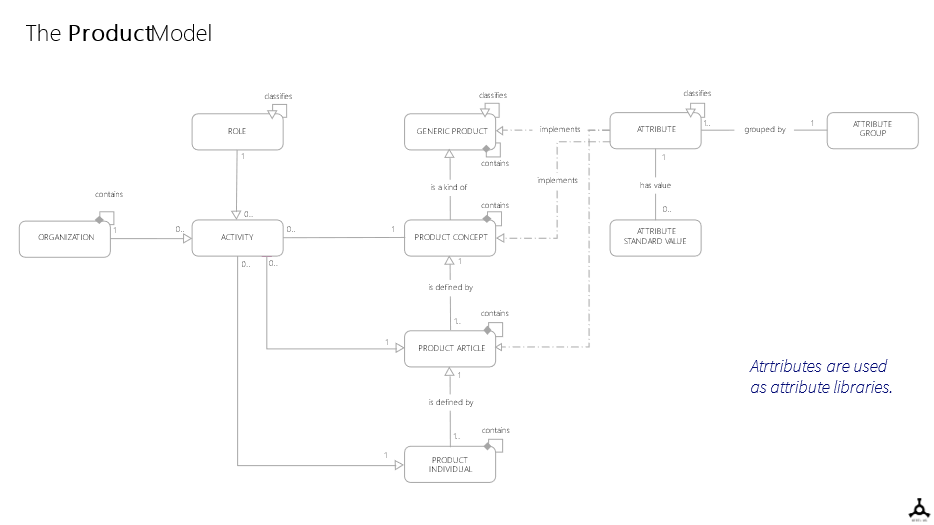
Click to enlarge image
Supporting Technologies
To effectively work with meta metadata, businesses can leverage several key tools and technologies, including taxonomies, ontologies, and semantics.
- Taxonomies: These provide a logical, hierarchical structure for organizing and classifying data. For example, a taxonomy can classify vehicles into cars and motorcycles, and further classify cars into SUVs, sedans, and station wagons.
- Ontologies: These help define the relationships between different data elements, such as “is manufactured by,” “is employed by,” and “is owned by.” In our earlier example, a V90 could be identified as a station wagon manufactured by Volvo Cars.
- Semantics: Often considered part of ontologies, semantics ensure that data elements have clear definitions, units of measure, and popular names for easy reference and understanding.
To manage these elements, businesses can use an object database for maintaining taxonomies, a relational database or knowledge graph for ontologies, and a data catalog or similar tool for semantics. By combining these technologies, organizations can create a robust foundation for meta metadata management and analysis.
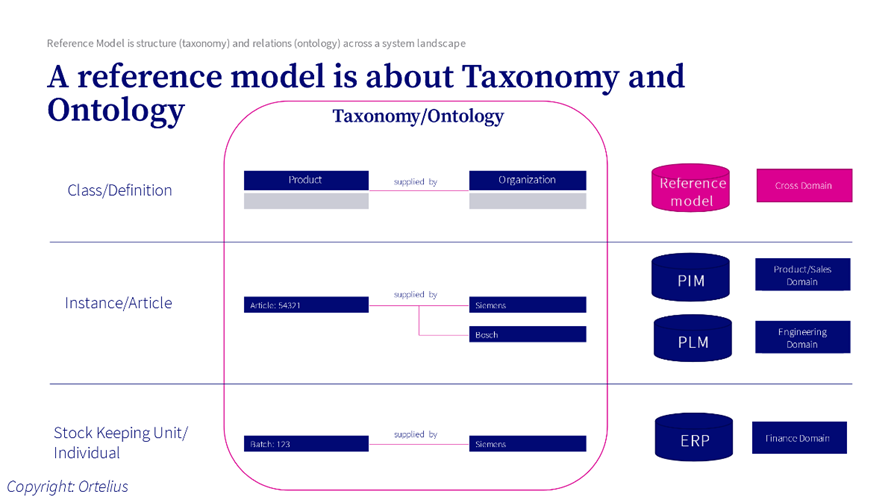
Click image to enlarge
People, Processes, and Way of Working – or becoming data literate
Incorporating meta metadata management into an organization’s culture is a critical step towards effectively utilizing data for decision-making. All of these elements can be considered part of being data literate. This process involves several key components:
- Training and education: Equip employees with the knowledge and skills needed to understand and work with data, metadata and meta metadata. This may include workshops, online courses, and hands-on exercises to familiarize team members with data concepts and tools.
- Collaboration: Encourage cross-functional collaboration between departments to ensure that data, metadata and meta metadata is effectively utilized throughout the organization. This can help break down silos and promote a shared understanding of data structures and relationships.
- Data governance framework: Implement a comprehensive data governance framework that outlines policies, procedures, and best practices for managing your data, metadata and meta metadata. The framework should include governance principles for data quality, security, privacy, and compliance.
- Continuous improvement: Regularly review and update all of your data management practices to ensure that they remain aligned with the organization’s goals and objectives. This may involve incorporating feedback from employees, conducting audits, and benchmarking against industry standards.
The Role of Documentation
Documentation of meta metadata involves several key elements such as structure (taxonomies and classification), relationships and context of data (ontologies). This makes it easier for both technical and non-technical users to understand and work with the information which, in turn, promotes better collaboration, knowledge sharing, and data-driven decision-making across the organization. Documentation is crucial, but often disconnected from daily operations. The core element is then to Operationalize the Taxonomies and Ontologies and make them a part of the IT infrastructure. This is what we call an Operational Reference Model which in turn enables several capabilities, such as Digital Twin of an Organization and Composable Enterprise:
- Having an Operational Information Model ensures the blueprint or architecture is not stale but actively used across the entire system landscape. Then documentation on the entities and relations are attached to the model.
- Metadata standards and guidelines: Establishing clear standards and guidelines for metadata documentation ensures that all employees are on the same page when it comes to defining and documenting data elements. This can include guidelines on naming conventions, data types, and relationships.
- Version control and change management: As data structures and relationships evolve over time, it’s important to maintain a record of these changes to ensure accurate and up-to-date documentation. Implementing version control and change management processes can help organizations track and manage updates to their meta metadata.
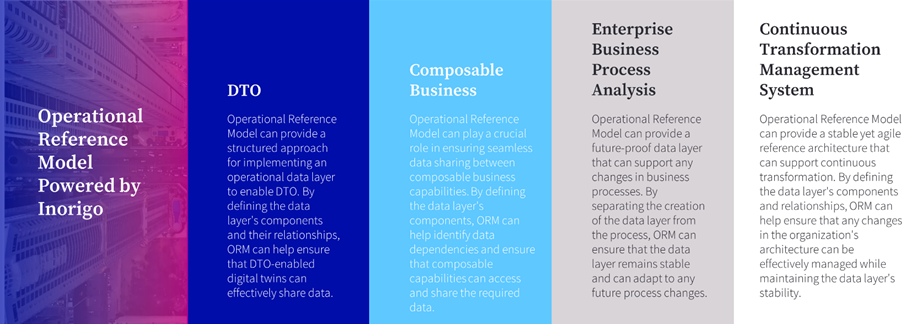
Click image to enlarge
Business Benefits and Value of Meta Metadata
There are several significant benefits to effectively managing and leveraging meta metadata:
- Reduced integration costs: By maintaining a clear understanding of data structures and relationships, businesses can more easily integrate new systems and data sources.
- Improved accuracy in analytics: Meta metadata helps organizations avoid half-truths and misconceptions in their dashboards, leading to more accurate insights and enables better decision-making.
- Increased resilience and adaptability to change: With a comprehensive understanding of their data, organizations and their metadata they can more smoothly replace or update systems without incurring excessive costs or delays.
In addition to the benefits previously discussed, there are several other advantages to effectively managing and leveraging and activating any type of metadata in an organization:
- Enhanced data discovery: With a comprehensive understanding of their data’s structure and relationships, organizations can more easily discover and access relevant information for their needs, reducing time spent on manual data searches and improving overall productivity.
- Streamlined data reporting: Meta metadata enables businesses to generate more consistent and accurate reports, as the underlying data structures and relationships are well-documented and understood. This can lead to better communication and decision-making within the organization.
Evolution of Observability and Lineage
The concept of meta metadata ties closely to the evolution of observability and lineage in data management. Observability is the ability to monitor and understand the state of a system based on its external outputs, while lineage refers to the tracking of data provenance and transformations. By having the ability to maintain and analyze data on a data-, metadata- and meta metadata level businesses can enhance observability and lineage, leading to better data quality, accuracy, and traceability.
As businesses become more data-driven, the importance of observability and lineage continues to grow. Several trends and developments are driving this evolution:
- Increased data complexity: As organizations collect and process more data from diverse sources, the complexity of their data landscape grows. This makes it even more critical to maintain a comprehensive understanding of data structures and relationships, which meta metadata can provide.
- Data privacy and compliance: With the introduction of stricter data privacy regulations such as GDPR and CCPA, organizations must be more diligent in tracking and managing data provenance and lineage to ensure compliance.
- Artificial intelligence and machine learning: As AI and ML technologies become more prevalent, the need for high-quality, well-structured data becomes even more important. Meta metadata can help ensure that these advanced analytics tools have access to accurate, consistent, and well-documented information.
Information Modeling and Meta Metadata
Information modeling is the process of creating a visual representation of an organization’s data structures and the relationships between different types of data. It plays a crucial role in understanding and working with meta metadata. By creating comprehensive information models, businesses can better visualize and understand the complex relationships between different data elements. This, in turn, helps organizations maintain accurate, consistent, and well-organized meta metadata, ultimately leading to more effective data management and analytics.
There are several approaches to information modeling that can help organizations better understand and manage their data:
- Conceptual modeling: This high-level, abstract approach focuses on defining the main entities, attributes, and relationships within an organization. It helps stakeholders gain a high-level understanding of the information landscape and provides a foundation for more detailed modeling.
- Logical modeling: This approach refines the conceptual model by adding more detail and structure to entities, attributes, and relationships. Logical modeling typically includes defining primary and foreign keys, as well as incorporating business rules and constraints.
- Physical modeling: This level of modeling focuses on the specific implementation details of the model within a particular database or storage system. It includes aspects such as table structures, indexing, and partitioning.
By employing these information modeling approaches, businesses can create a clear and comprehensive understanding of their data landscape, making it easier to manage and utilize data effectively.

Click image to enlarge
Conclusion
Meta metadata is an often-overlooked aspect of data management that holds immense potential for businesses in terms of productivity and decision-making. By understanding and effectively managing meta metadata, organizations can reap numerous benefits, including reduced integration costs, improved accuracy in analytics, and increased resilience to change.
To fully harness the power of meta metadata, businesses must invest in supporting technologies such as taxonomies, ontologies, and semantics, and ensure that their people, processes, and ways of working are aligned with data management best practices. Additionally, proper documentation, observability, lineage, and data modeling are essential for successfully navigating the complexities of meta metadata.
In an increasingly data-driven world, organizations that prioritize meta metadata management will be better positioned to make informed, sustainable decisions and thrive in the competitive business landscape.
Webinar
For more information, please watch Ortelius and Leit Data‘s webinar:
/Daniel Lundin, Head of Product & Services

